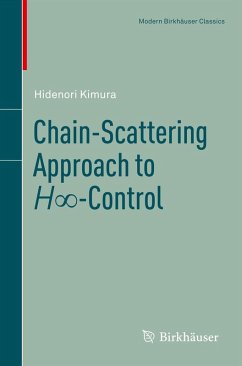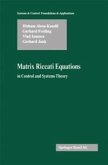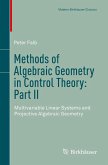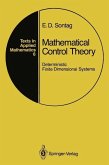The advent of H8-control was a truly remarkable innovation in multivariable theory. It eliminated the classical/modern dichotomy that had been a major source of the long-standing skepticism about the applicability of modern control theory, by amalgamating the "philosophy" of classical design with "computation" based on the state-space problem setting. It enhanced the application by deepening the theory mathematically and logically, not by weakening it as was done by the reformers of modern control theory in the early 1970s.
The purpose of this book is to provide a natural theoretical framework that is understandable with little mathematical background. The notion of chain-scattering, well known in classical circuit theory, but new to control theorists, plays a fundamental role in this book. It captures an essential feature of the control systems design, reducing it to a J-lossless factorization, which leads naturally to the idea of H8-control. The J-lossless conjugation, an essentially new notion in linear system theory, then provides a powerful tool for computing this factorization. Thus the chain-scattering representation, the J-lossless factorization, and the J-lossless conjugation are the three key notions that provide the thread of development in this book. The book is completely self contained and requires little mathematical background other than some familiarity with linear algebra.
Reviews:
The book is useful to praciticing engineers in control system design and as a text for a graduate course in H8-control and its applications. -Zentralblatt MATH
H. Kimura's textbook is a useful source of information for everybody who wants to learn this part of modern control theory in a thorough manner. -Mathematica Bohemica
The book provides a quite complete picture of the chain-scatteringtechniques for the solution of conjugation, factorization and control problems. It somehow complements other books on similar arguments. Therefore, it is intended for graduate students willing to understand the differences between various theoretical approaches to H8-control, as well as to refresh the underlying historical background and similarities with other connected scientific disciplines. -IEEE Transactions on Automatic Control
The purpose of this book is to provide a natural theoretical framework that is understandable with little mathematical background. The notion of chain-scattering, well known in classical circuit theory, but new to control theorists, plays a fundamental role in this book. It captures an essential feature of the control systems design, reducing it to a J-lossless factorization, which leads naturally to the idea of H8-control. The J-lossless conjugation, an essentially new notion in linear system theory, then provides a powerful tool for computing this factorization. Thus the chain-scattering representation, the J-lossless factorization, and the J-lossless conjugation are the three key notions that provide the thread of development in this book. The book is completely self contained and requires little mathematical background other than some familiarity with linear algebra.
Reviews:
The book is useful to praciticing engineers in control system design and as a text for a graduate course in H8-control and its applications. -Zentralblatt MATH
H. Kimura's textbook is a useful source of information for everybody who wants to learn this part of modern control theory in a thorough manner. -Mathematica Bohemica
The book provides a quite complete picture of the chain-scatteringtechniques for the solution of conjugation, factorization and control problems. It somehow complements other books on similar arguments. Therefore, it is intended for graduate students willing to understand the differences between various theoretical approaches to H8-control, as well as to refresh the underlying historical background and similarities with other connected scientific disciplines. -IEEE Transactions on Automatic Control
Dieser Download kann aus rechtlichen Gründen nur mit Rechnungsadresse in A, B, BG, CY, CZ, D, DK, EW, E, FIN, F, GR, HR, H, IRL, I, LT, L, LR, M, NL, PL, P, R, S, SLO, SK ausgeliefert werden.









